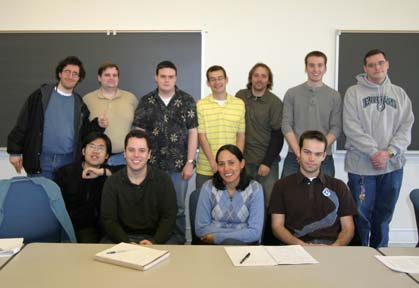Description
Presents basic concepts in computer network analysis and design. Emphasizes generic principles developed over the last two decades in the specification, implementation and evaluation of modern computer networks and networking systems.
Purpose
This course presents analytic concepts in computer network analysis and design. It is designed for the beginning graduate student in electrical engineering or computer science. Students should have a mathematical maturity typical of undergraduate curricula in science and engineering, including calculus and discrete mathematics, as well as a course in operating systems and a course in computer architecture.
The teaching approach in this course emphasizes modelling, analysis and design principles used in modern computer networks, including the Internet of today. The subject material includes reference models, queueing systems, graph theory, routing algorithms and resource management systems. Case studies include Internet foundation protocols, such as IP and TCP, as well as Internet multicasting and differentiated service principles.
Requirements
Prerequisites: CPEG419 or ELEG323, CISC360, CISC361 or permission of instructor
Supplemental materials: Electronic documents available from various web and ftp sites
Exams: Midterm (30%) and final (70%); closed book; no notes
 |
Text: Computer Networks, 4th Edition. Tannenbaum, Wiley, 2003, ISBN 0-13-066102-3. |  |
Recommended: Data Networks, 2nd Edition. Bertsekas and Gallager, Prentice Hall, 1992. |
Additional Information
- Notes on queueing theory PDF
- Notes on coding techniques PDF
- Notes on the physical layer PDF
- Notes on the link layer PDF
- Notes on SONET (not required) PDF
- Technical History of the Internet PostScript | PowerPoint | PDF
Syllabus
- Introduction and background: Chapter 1.1-1.3, 1.4.2, 1.5 (except 1.5.2).
Network components and interconnections
Circuit and packet switching architectures
Local, metropolitan and wide area networks and interconnections
Applications case examples - Physical layer: Chapter 2 (all).
Public/private data and telephone networks
Overview of contemporary digital and analog transmission systems
Engineering principles of fiber, wire, radio and satellite circuits
Case studies of selected technologies: SONET/SDH, ATM, ISDN, ... - Data link layer: Chapter 3 (all).
ARQ principles, the AB protocol, framing, error recovery - Medium access control: Chapter 4.1-4.3, 4.3.1-4.3.5, 4.4.
Channel allocation, access protocols, Ethernet, wireless. - Network layer: Chapter 5 all except 5.3 and 5.4.
Graph theory (extra), routing paradigms
Virtual circuit (connection oriented) principles
Datagram (connectionless) principles
Reference models: layers, entities, access points, protocols
Queueing theory, traffic modelling and analysis (extra) - Transport layer: Chapter 6.2, 6.4, 6.5.
Flow and congestion control strategies
Three-way open, reliable vs. graceful close - Application layer: Chapter (all).
Traditional services: virtual terminal, file transfer, mail
Interactive services: database retrieval, the Web
Multicast services: multimedia (audio, video, whiteboard) conferencing - Network security: Chapter 8 (to be determined)
Privacy and security models: public/private key cryptosystems








